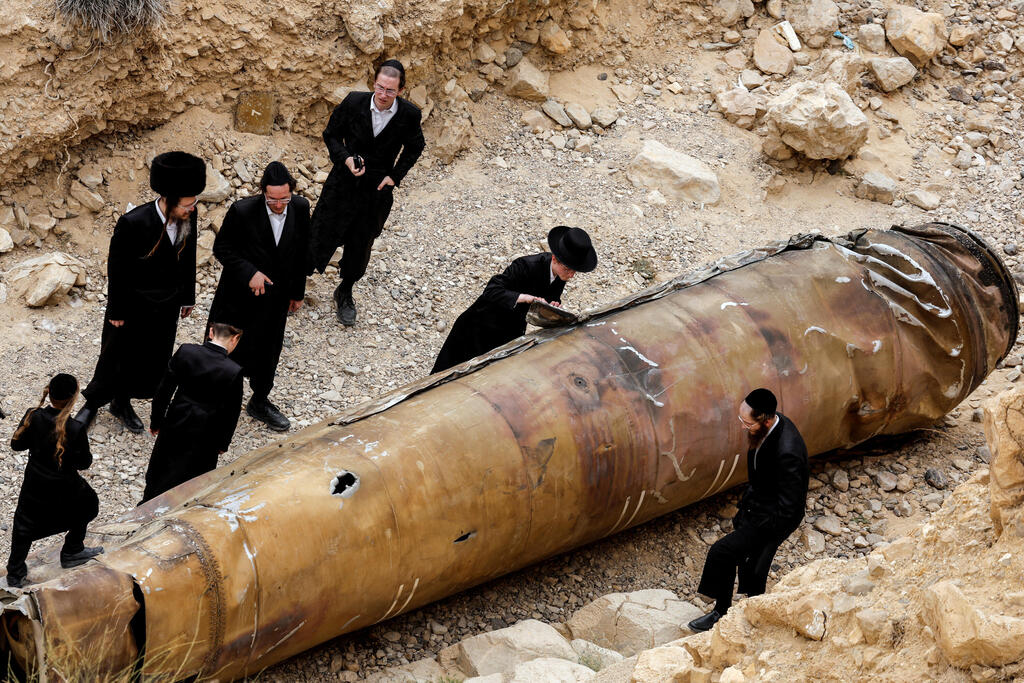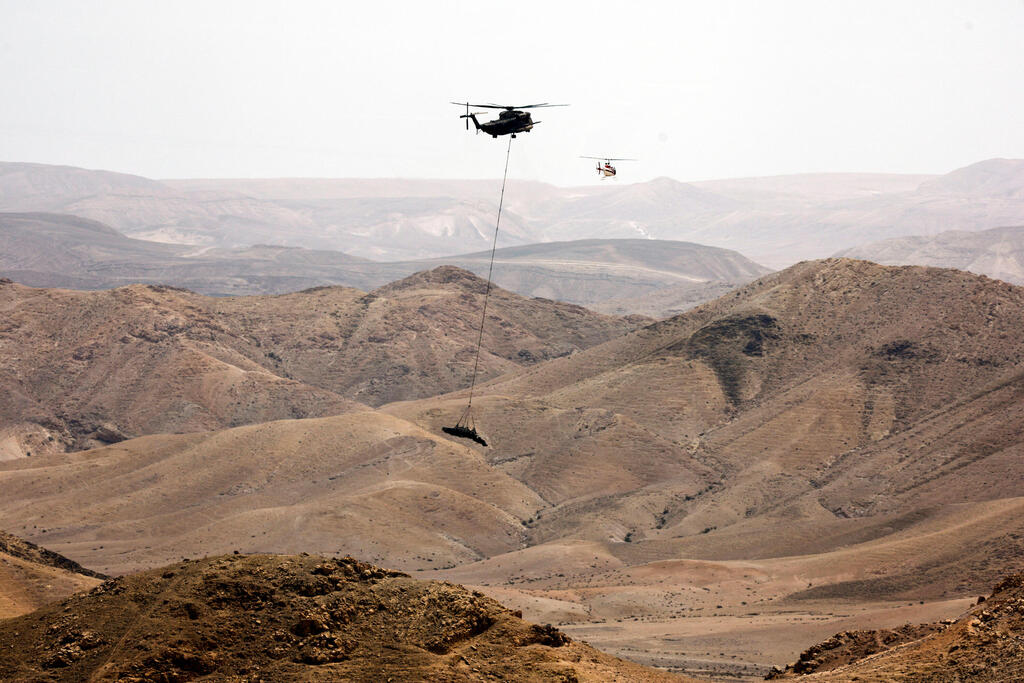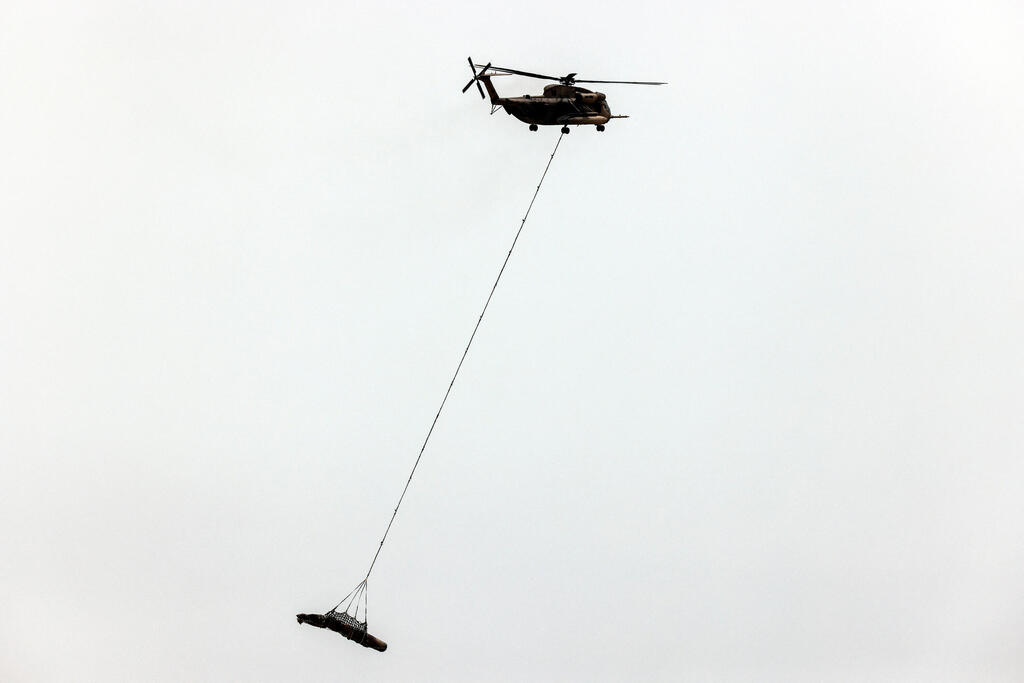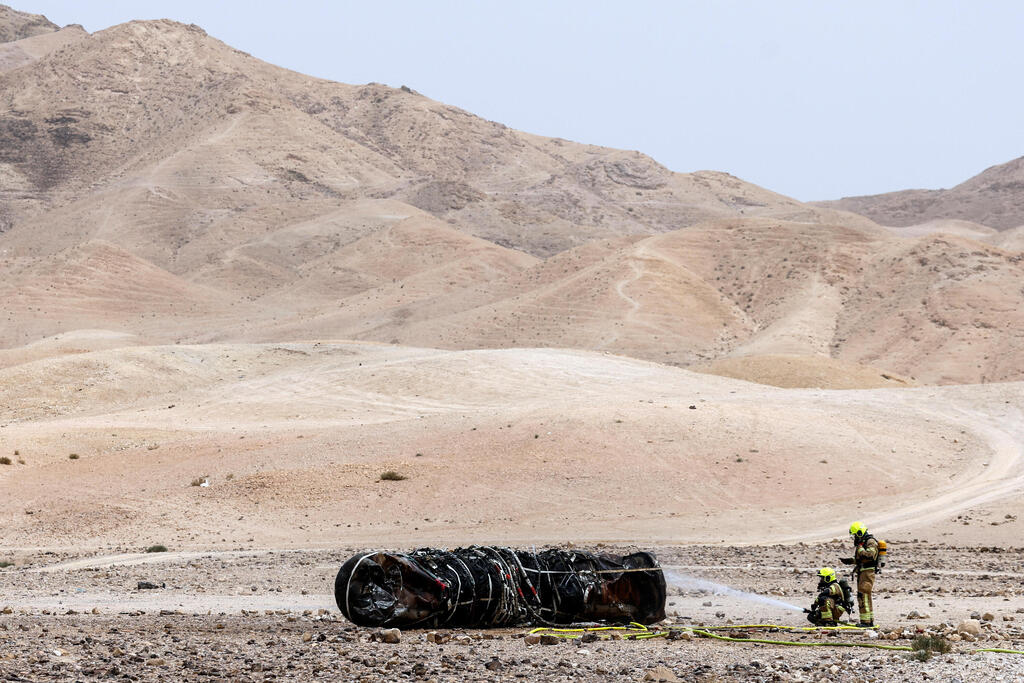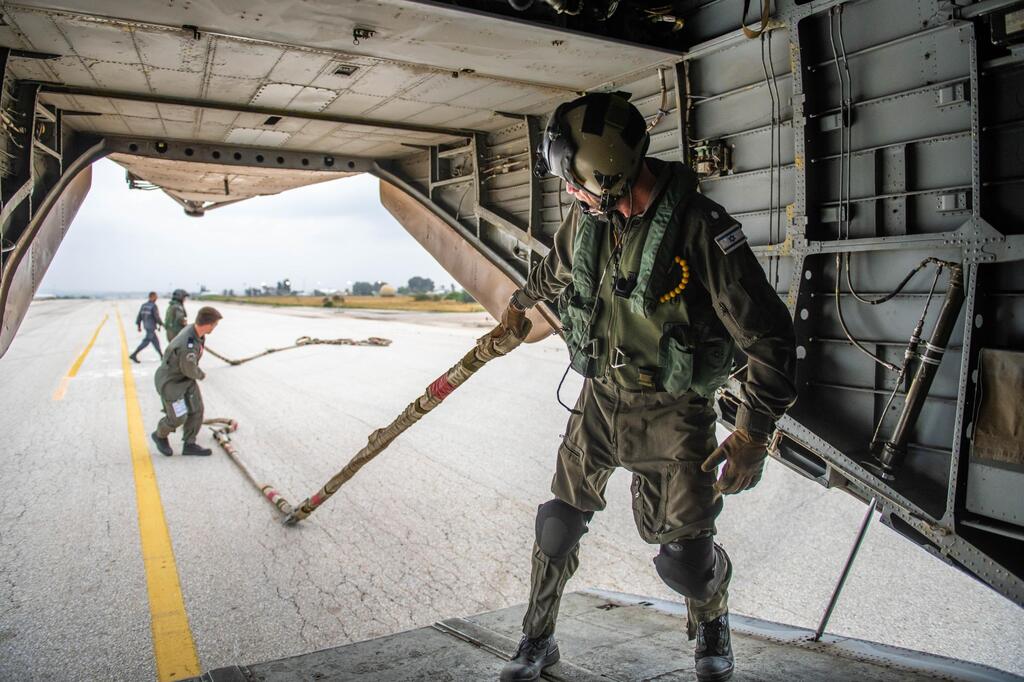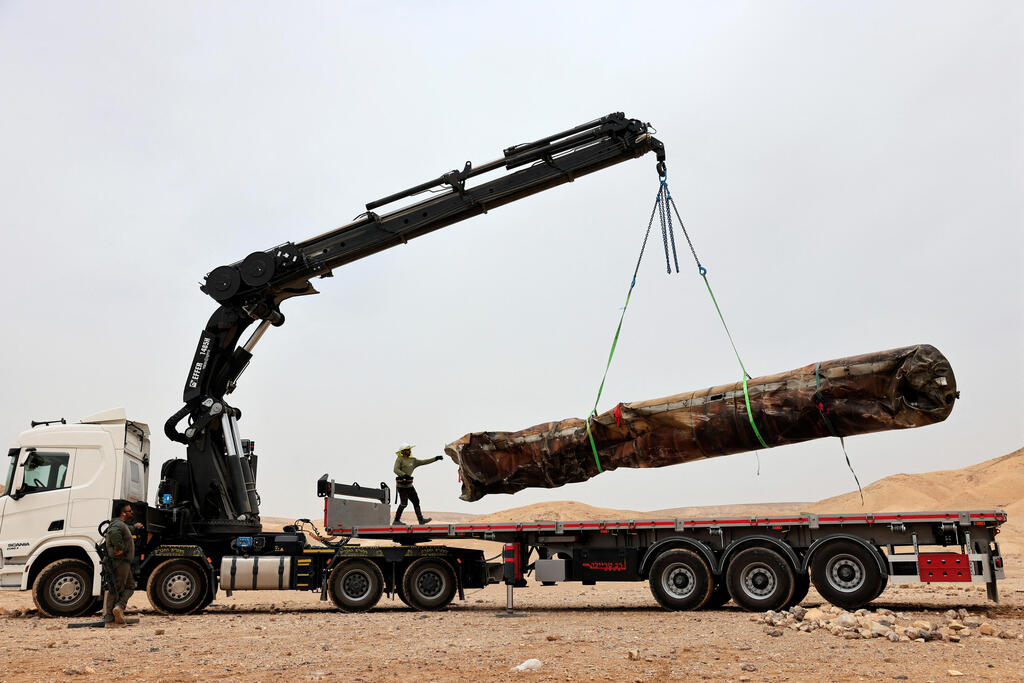Getting your Trinity Audio player ready...
IDF forces airlift massive Iranian missile fragment found near Arad
(Video: IDF Spokesperson's Unit)
A group of hikers was documented on Friday climbing on top of a large fragment of an Iranian missile in southern Israel, fired as part of Tehran's unprecedented attack on the Jewish state earlier this month.
The IDF Home Front Command, aided by an Israeli Air Force (IAF) Sikorsky CH-53 Sea Stallion helicopter and the police, later removed the missile debris from Yaelim Stream near the city of Arad, nearly two weeks after the attack.
7 View gallery
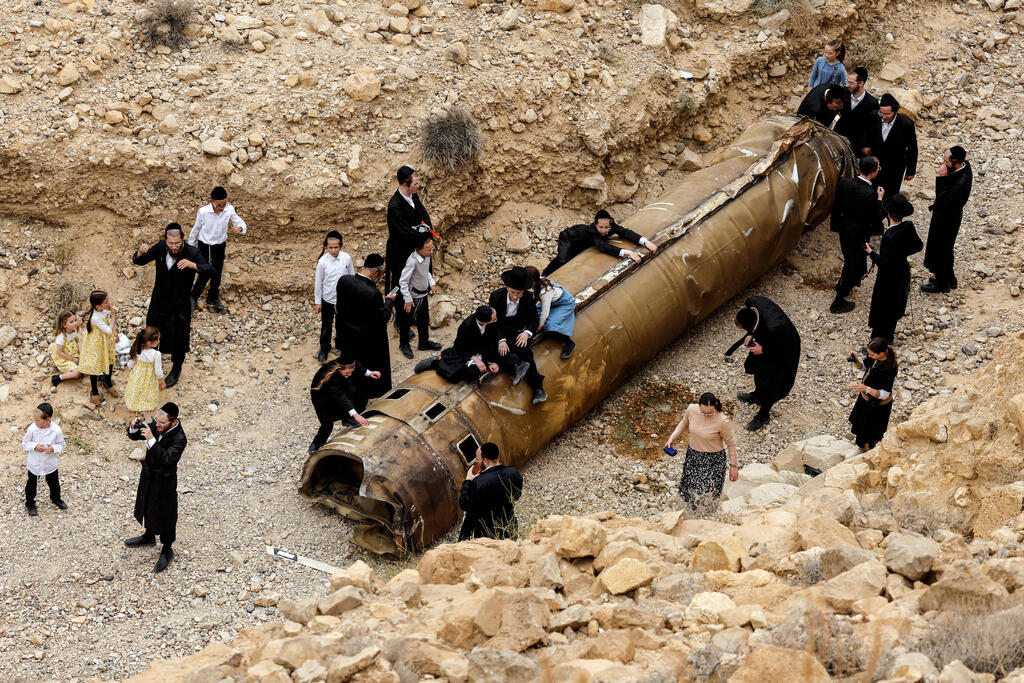

Hikers seen climbing on Iranian missile fragment in southern Israel
(Photo: REUTERS/Amir Cohen)
According to the IDF, the crash site near Highway 31 toward the Dead Sea had already been inspected prior and was declared safe to move.
The missile debris was discovered by hikers during a nighttime hike on Wednesday. At that time, Home Front Command and the police acknowledged they were aware of the missile's location, yet they allowed hikers access to the site.
An IDF statement about the removal of the debris made no mention of images of hikers at the site but stated, "The public is requested to act in accordance with the instructions of the Home Front Command when encountering any suspicious objects. We emphasize that you should not touch any missile debris and should report findings to the Israel Police 100 hotline."
The army further noted that "The terrain and the extreme weight of the missile debris made the removal complex, a process made possible through advanced preparation by the Home Front Command, and assistance from the IAF technological headquarters. During the process, the missile debris was cleared of hazardous materials."
Another fragment of a ballistic missile was also found along the Dead Sea shores shortly after the attack. It was taken to the Emanuel Camp military base in southern Israel and presented to international media.
Lieutenant A., head of the Explosive Ordnance Disposal team at the Ammunition Decommissioning Institute, noted that the fragment was the propellant tank of the Iranian missile.







